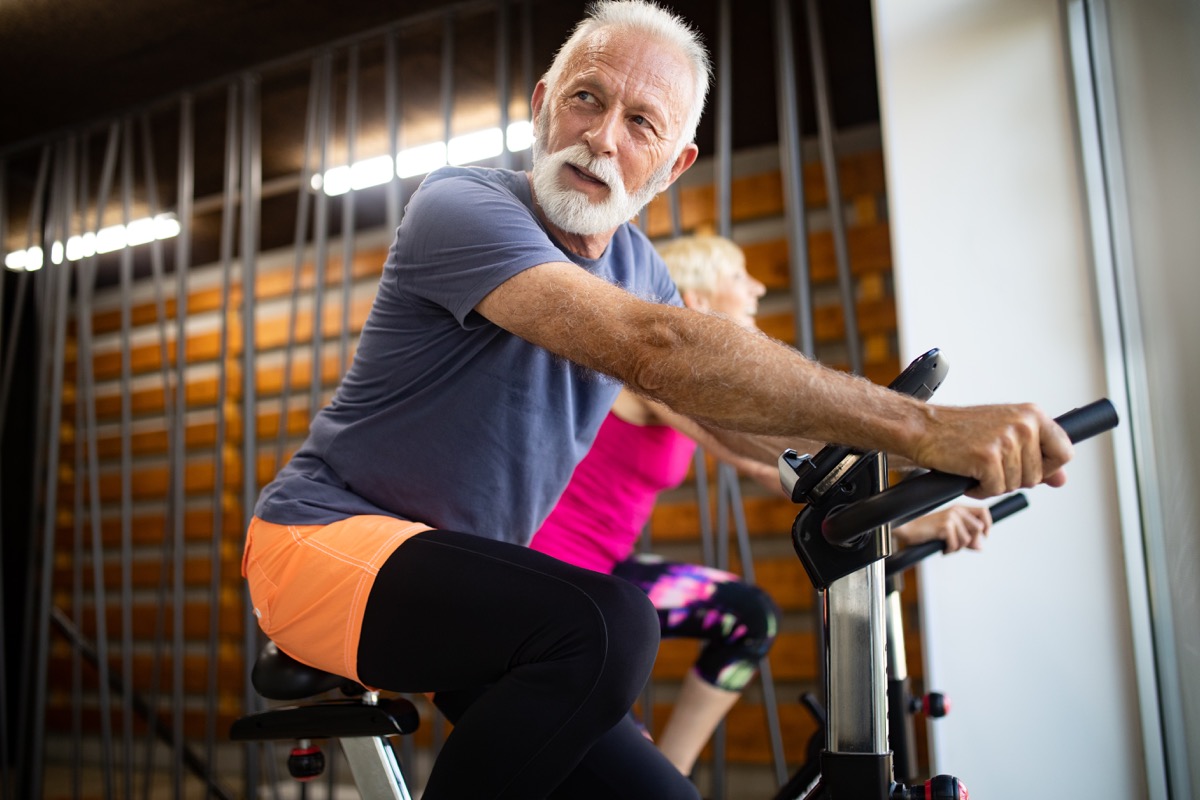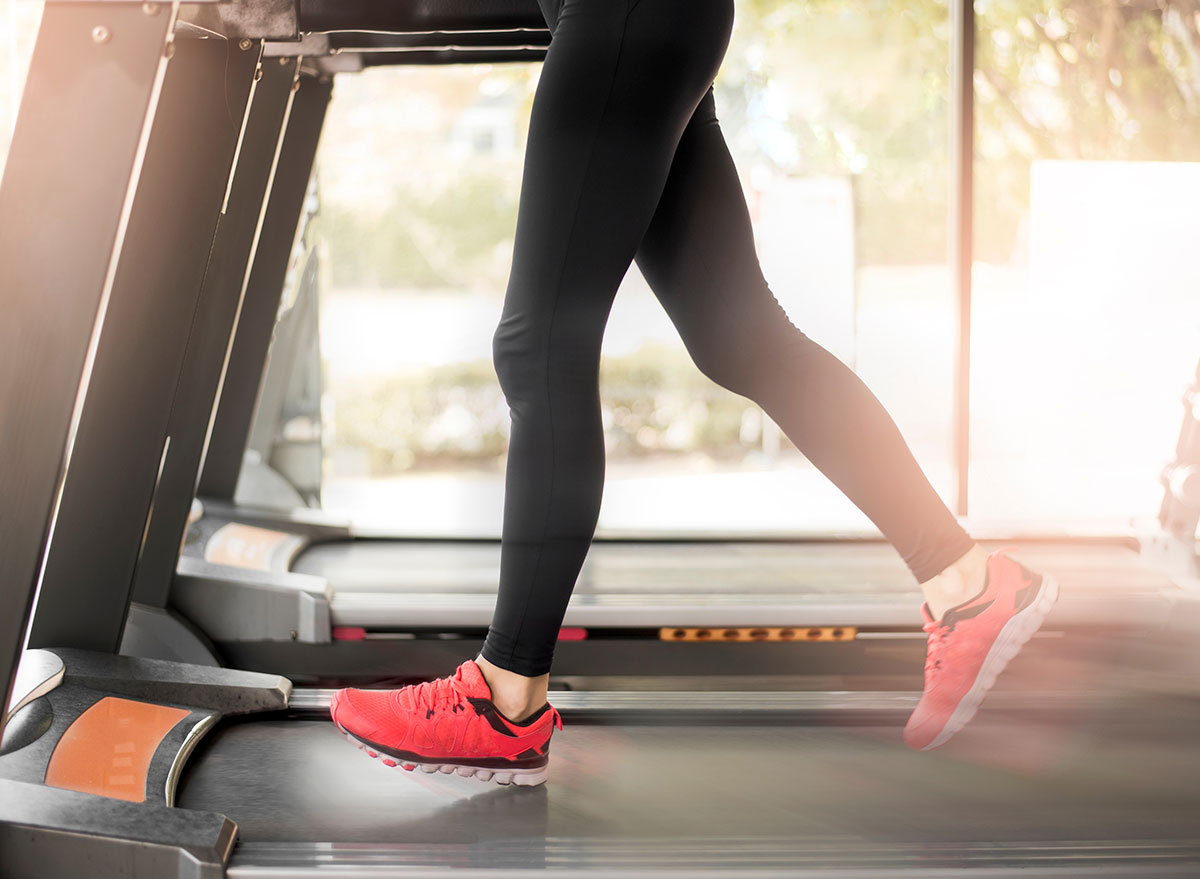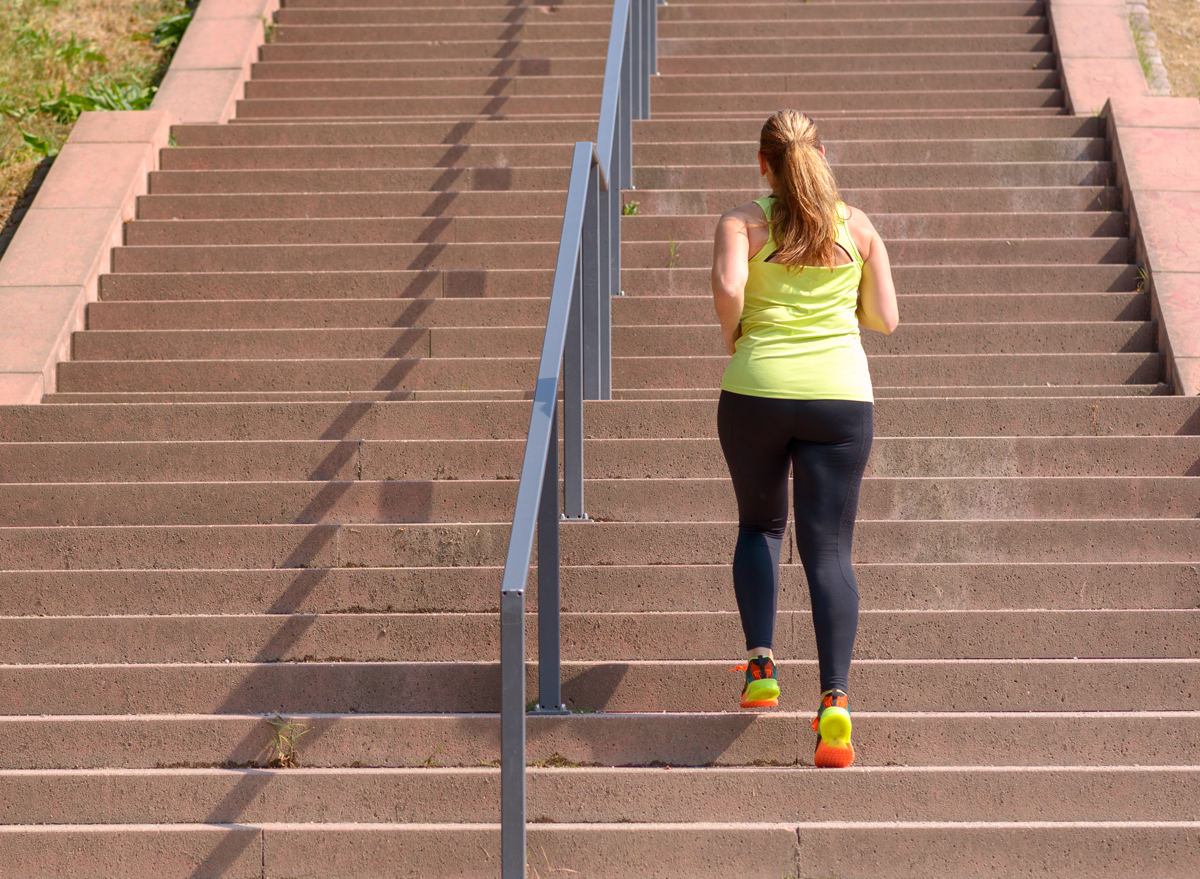One Major Side Effect of Going on a Single 1-Hour Walk, Says New Study

People who follow the latest in science news likely haven’t read this much about mitochondria, the little organelles in your cells responsible for burning off the energy that your body consumes, since high school biology class.
Just last week, an eye-opening new study published in the journal Cell Metabolism found evidence that performing too many interval workouts—essentially doing too much HIIT every week—can actually damage your mitochondrial function and therefore negatively impact your metabolism overall. (In short, the study suggests that you’d be wise to confine your hardcore “vigorous” training to within 90 minutes every week.)
Another all-new study, conducted by researchers at Oregon State University, also delved into the link between your exercise habits and your mitochondrial function, and what they discovered was excellent news for otherwise unfit people who would prefer to engage in more moderate-intensity exercise such as taking brisk walks, biking at a more easy pace, or performing gentler aerobics. Read on for more about what this study says, and for more news from the front lines of health and fitness, see how Drinking This 30 Minutes Before Exercise Torches Fat, Says New Study.
Measuring the Burn

The OSU study focused not on hardcore athletes but on sedentary individuals, whom they recruited for a series of tests that required them to ride a stationary bike for one hour at a time at a moderate pace. “Moderate” intensity was defined as working out at “65% of their maximum effort.” Afterward, the researchers took a biopsy of the participants’ muscles to gauge mitochondrial activity.
In terms of your metabolism, it’s important to remember that your mitochrondria are the things in your cells that actually perform the crucial act of “burning off”—taking in calories and turning them into heat. They’re also why exercising and muscle growth are essential to sustained weight loss and health, as your muscles are your mitochondrial hotbeds. To boil it all down into the simplest terms: The more muscle mass you have, the more mitochondria you have to burn calories. And for more great side effects of walking more, learn What Walking for Just 20 Minutes a Day Does to Your Body, According to Science.
What Happened After One Hour

After cycling at a moderate pace for an hour, the study subjects’ mitochondria were found to have burned 12% to 13% more “fat-based fuel” and 14% to 17% more “sugar-based fuel.”
“It’s pretty remarkable that even after just one hour of exercise, these people were able to burn off a little more fuel,” remarked Matt Robinson, an assistant professor at OSU’s College of Public Health and Human Sciences.
The findings reveal why this sort of moderate-level exercise can help fight obesity and even stave off the effects of diabetes. “Physiologically, when the body undergoes exercise, sugars tend to be burned off first while fats are stored, but in cases of diabetes and obesity, there is some dysregulation in metabolism that causes the body to not be able to switch between the two types of fuel,” says the study. “Exercise can help reset that system.”
Why You Should Make it a Habit

Again, the study focused on healthy but inactive individuals who don’t adhere to strict exercise regimens. The study reveals why such people should make moderate-level exercise a part of their weekly routine. “We know that exercise is good for you, in general,” said Robinson. “But those benefits of that single bout of exercise seem to fade away after a day or two. You get the long-term benefits when you do that exercise again and again and you make it a regular habit.”
Try These Types of Exercise

If you’d like to do more moderate-intensity exercise—roughly defined as exercise that can get your heart rate up to “50% to 60% higher than your resting heart rate,” according to Christopher Travers, MS, of the Cleveland Clinic—here are a few great recommendations (also courtesy of the Cleveland Clinic):
- A brisk two-mile walk in 30 minutes.
- A five-mile bike ride in 30 minutes.
- 20 minutes of swimming laps at the pool.
- Climbing stairs for 15 minutes.
And for more great exercise advice, make sure you’re aware of the One Major Side Effect of Sitting on the Couch Too Much, Says New Study.








